Celebrating our deep-rooted love for trees
Givers of oxygen, providers of shade and shelters to our native wildlife – reasons to love trees never grows old.
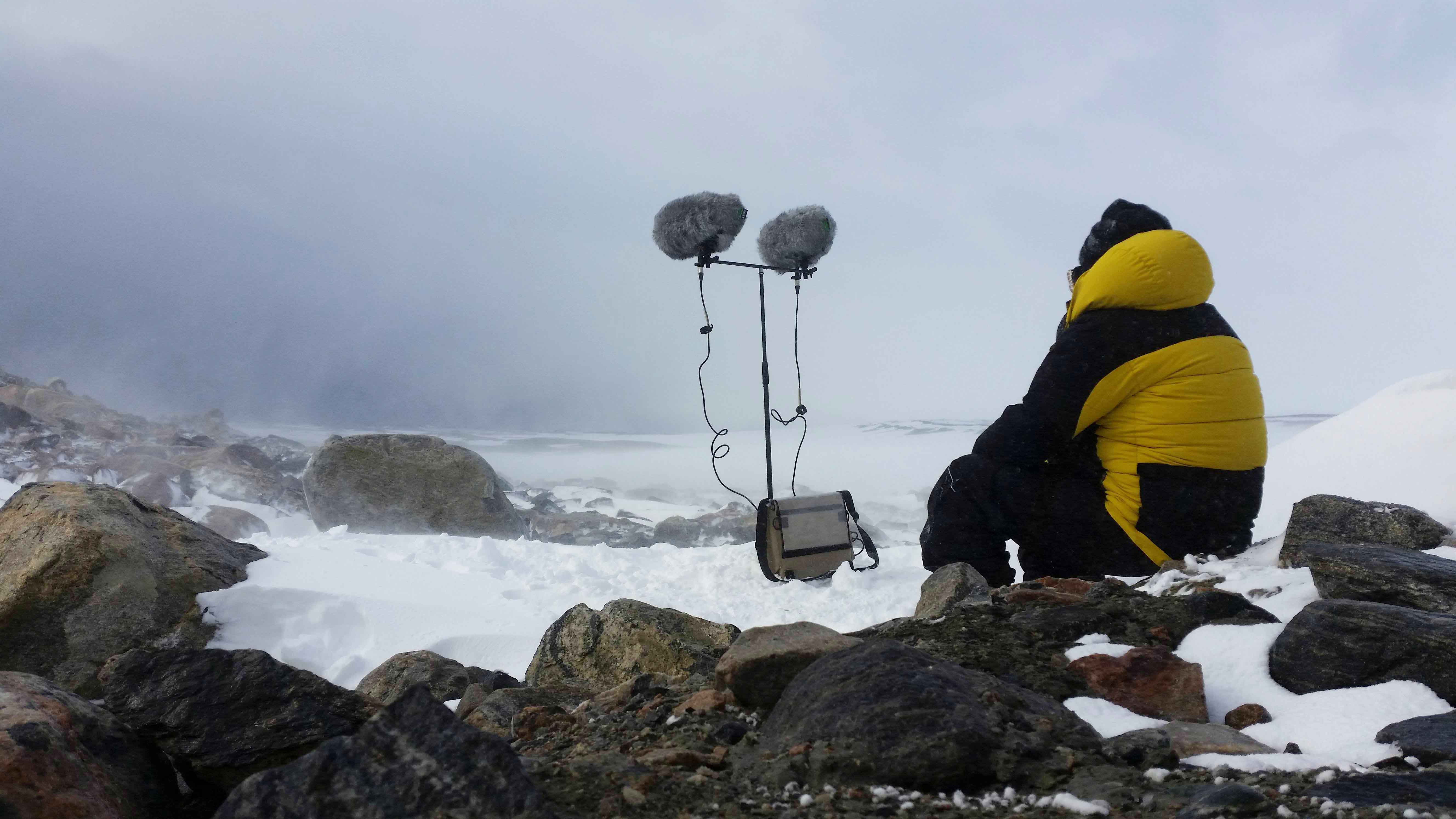
Associate Professor Philip Samartzis, from RMIT University's School of Art, has twice travelled to Antarctica to explore the impacts of extreme environmental conditions on people.
“A lot of what I do is trying to capture the experience of working at a unique research station," Samartzis said.
"It's as much about the people as the environment they work in.”
As an artist and academic, he uses sound recordings and the latest microphone technology to document the Antarctic soundscape and how it shifts with time.
“As the habitat changes as a result of the changing climate, the sound recordings change. The sounds speak for themselves.”
Samartzis said he is delighted with the stamp issue, not only as it recognises the importance of the Arts Fellowship, but also because he used to work as a postal clerk.
“I used to sell stamps. Now I’m on one,” he laughed.
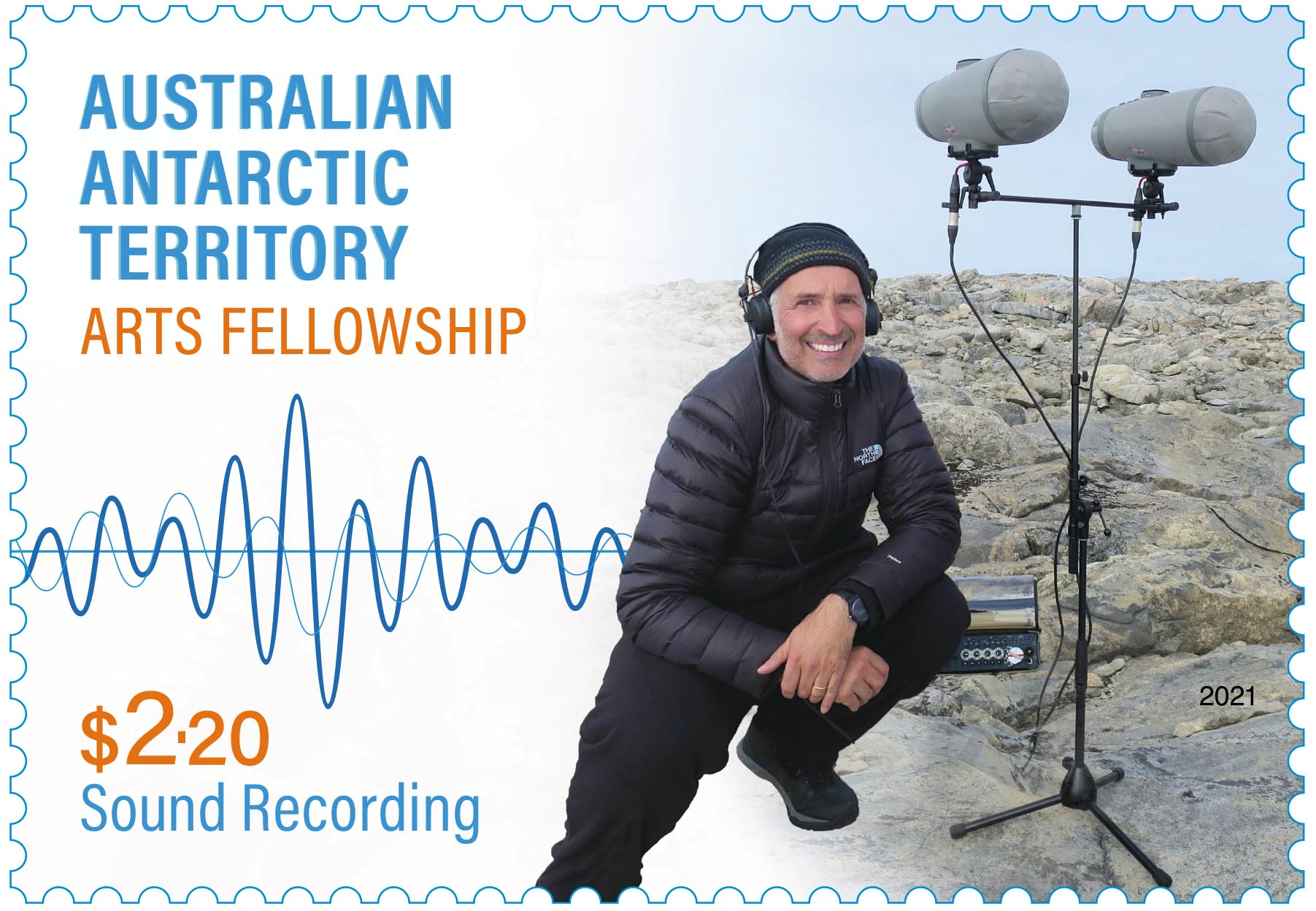 Philip Samartzis recording Antarctic soundscapes.
Philip Samartzis recording Antarctic soundscapes.
Photographer David Neilson, another two-time Fellow, travelled south to Mawson research station in 1990-91 and 2004-05, and produced striking photos for his book Southern Light.
“A number of creative photographers have received Arts Fellowships over the years, and I feel honoured to be representing our craft on this postal celebration of the program,” Neilson said.
“It was a privilege to have been given the opportunity to experience and photograph the ‘great white south’, and I think the Arts Fellowship program has played a valuable role in increasing people's understanding of Antarctica.”
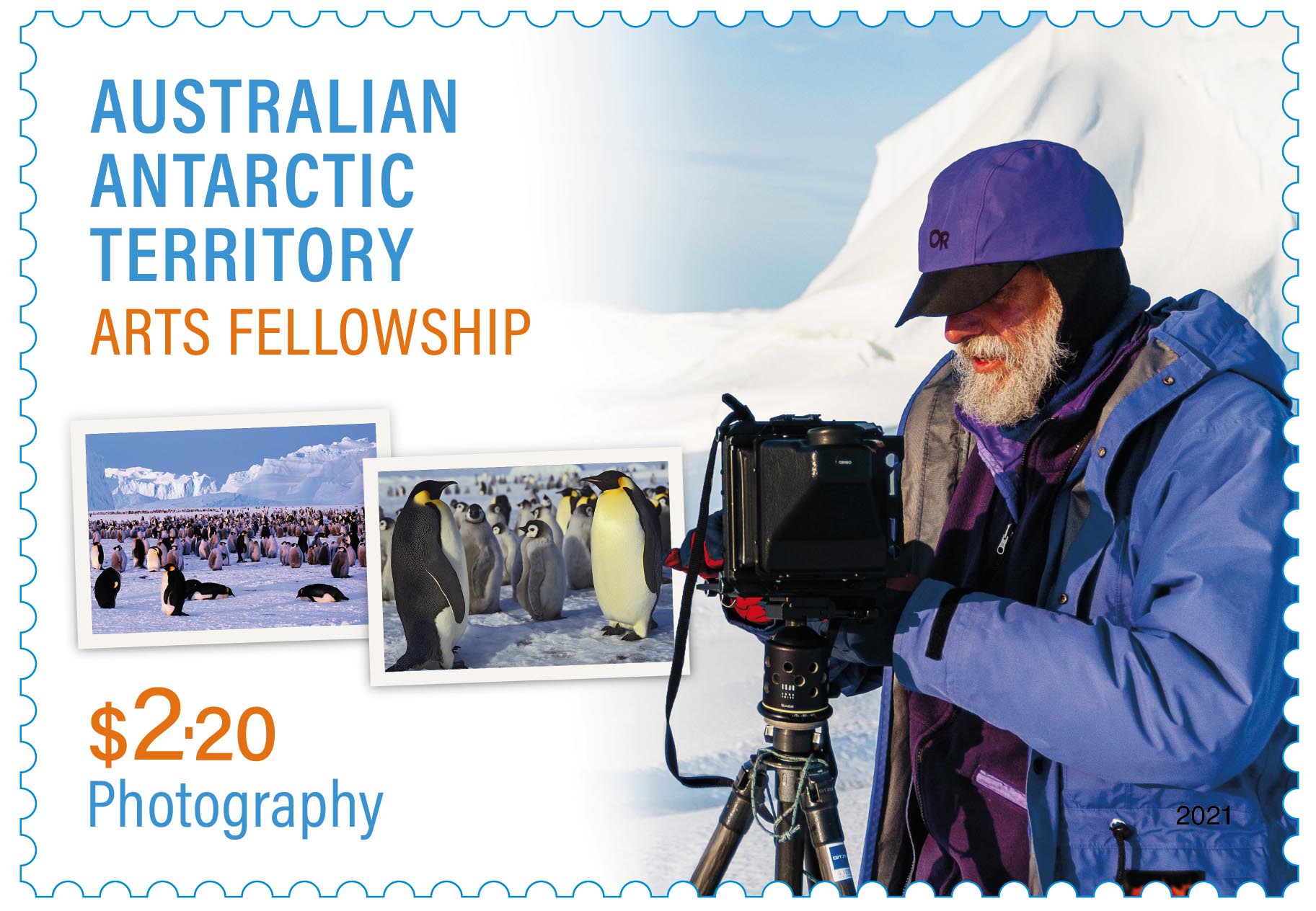 David Neilson photographing wildlife and landscapes.
David Neilson photographing wildlife and landscapes.
Harpist Alice Giles AM illustrates musical performance.
In 2011, she celebrated the centenary of the first Australasian Antarctic Expedition with live harp performances at Davis and Mawson research stations.
“The Fellowship was a turning point, and definitely the most exciting creative event in my life,” Giles said.
“I’ve continued to use the material in many different ways ever since, including ongoing Musica Viva in Schools performances, which brings the inspiration of the adventure to primary school students.”
Living in a small country town, Alice said she has been looking forward to casually asking for the new stamps from her local post office.
“Being on a stamp is just incredible - I still have to pinch myself it’s really happening,” she said.
“Surely this is the first time a harp or a harpist has appeared on an Australian stamp, bringing an instrument often seen as an outlier into the broader public view.”
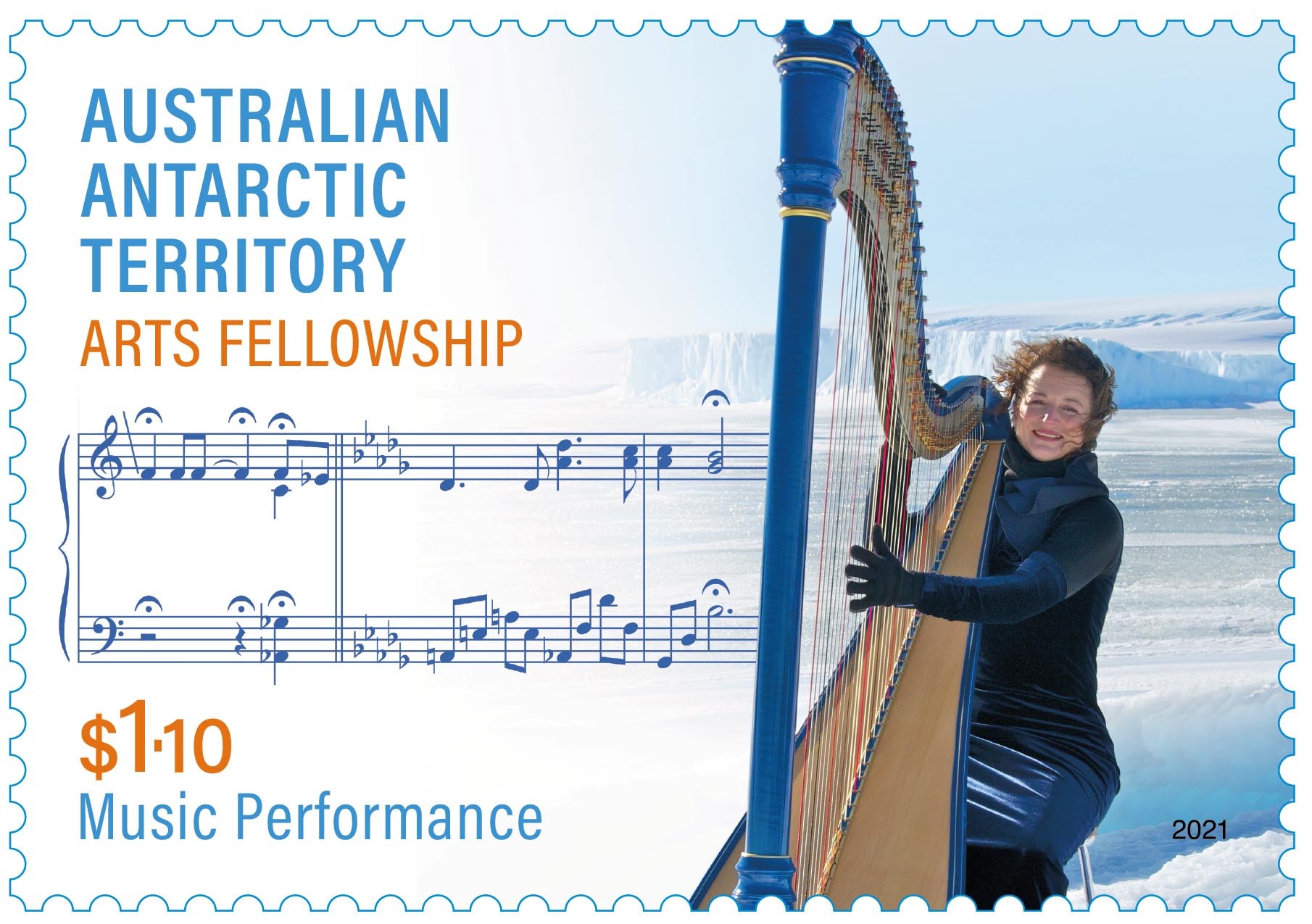 Alice Giles playing harp on the ice.
Alice Giles playing harp on the ice.
Painter and sculptor John Kelly braved the Antarctic elements for three months in 2013 to create a series of 57 oil paintings on location, responding directly to the landscape.
His paintings have been exhibited internationally and published in his book Beyond Woop Woop.
“The Arts Fellowship enhanced my life with the sheer exhilaration of experiencing an ice breaking ride to one of the most dangerous and beautiful landscapes in the world,” Kelly said.
“I have always wanted my art to have a stamp of approval. Now I have the ultimate one.”
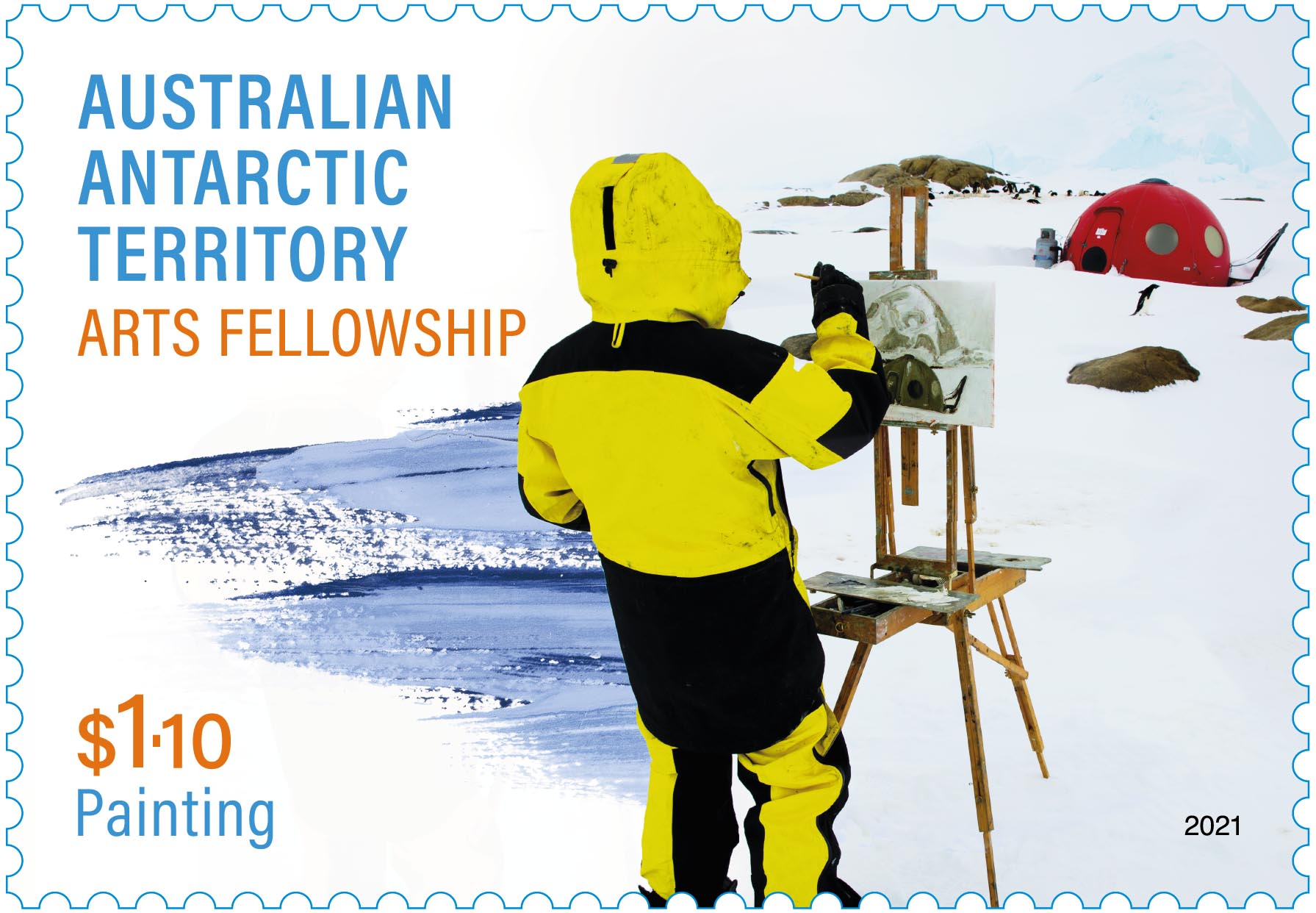 John Kelly painting a scene of life at the station.
John Kelly painting a scene of life at the station.
Australia Post’s Group Manager Philatelic Michael Zsolt acknowledged the contribution of the Antarctic Arts Fellowship program, which has enabled artists and writers to travel south and create works inspired by their experiences and insights since 1984.
“Through their Antarctic-inspired creations, Fellows have highlighted the beauty and wonder of the icy continent, and promoted the work of the Australian Antarctic Program to Australians and the world,” he said.
The Arts Fellowship program stamps join a range of other Australian Antarctic Territory stamp issues, including ‘RSV Nuyina’ in 2020, ‘Centenary of the Australasian Antarctic Expedition (1911–14)’ in 2014, ‘East Antarctic Deep Sea Creatures’ in 2017, ‘Mapping the Australian Antarctic Territory’ in 2019, and ‘Wyatt Earp Expedition 1948’ in 2020.
The Australian Antarctic Territory: Arts Fellowship Program stamp issue is available from 16 March 2021 at participating Post Offices and online.
Givers of oxygen, providers of shade and shelters to our native wildlife – reasons to love trees never grows old.


RMIT University acknowledges the people of the Woi wurrung and Boon wurrung language groups of the eastern Kulin Nation on whose unceded lands we conduct the business of the University. RMIT University respectfully acknowledges their Ancestors and Elders, past and present. RMIT also acknowledges the Traditional Custodians and their Ancestors of the lands and waters across Australia where we conduct our business - Artwork 'Sentient' by Hollie Johnson, Gunaikurnai and Monero Ngarigo.
More information